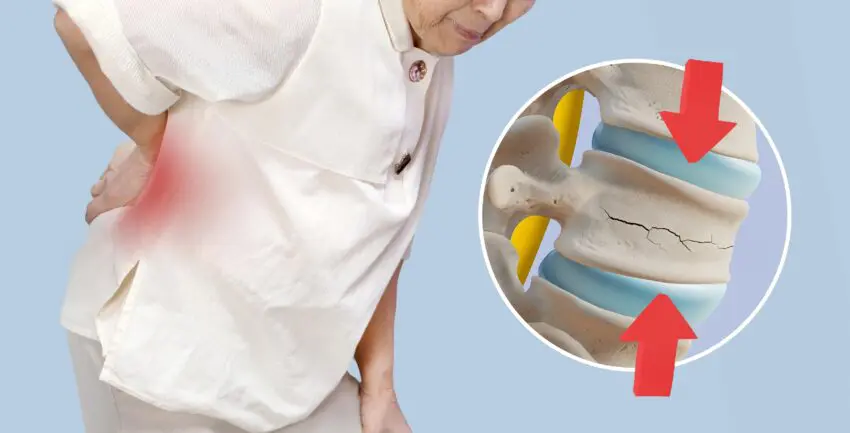Back pain can be a symptom of aging, but for many older adults, it could be a sign of a vertebral compression fracture–a serious but preventable condition that can completely change the way you live your life. These spine fractures can be painful, limiting, and even impact your independence. But the good news? There are still many preventative methods and treatments that can be implemented to safeguard against them. Dr. Paul Anderson, an internationally recognized expert in the field of orthopedic spinal surgery and currently holds an academic position as Emeritus Professor of Orthopedic at the University of Wisconsin, and Dr. Laura Giangregorio, a researcher with the Fragility Fracture Network and professor at the University of Waterloo, sat down with NSHF CEO, Dr. Rita Roy, to discuss these kinds of fractures.

What is a Vertebral Compression Fracture?
Two very common types of fracture are traumatic fractures and fragility fractures. Fragility fractures occur as a result of having fragile, or weak, bones which makes them susceptible to breaking. A vertebral compression fracture is the most common fragility fracture that occurs in older adults. This type of fracture occurs in the spine, compresses the bones called vertebral bodies, and causes patients to lose height and to lean forward. A fragility fracture is often caused by osteoporosis, a condition in which the bone becomes more fragile, especially in people over the age of 50. “Instead of being shaped like a rectangle, the bone becomes much more wedge-shaped…”, described Dr. Anderson. Thus, once a bone becomes weak enough, a stress or load that exceeds its strength can cause the bone to fracture. A simple fall backwards or lifting can cause fractures, significantly increasing the risk of another fracture occurring again.
How Fragility Fractures Affect Daily Life
These fractures can completely alter your life. As stated by Dr. Giangregorio, each vertebral compression fracture can cause:
- Pain
- Disability/loss of function
- Loss of independence
- Premature death
Dr. Anderson discussed how these fractures can also exert negative psychological effects such as patients losing confidence in their body. He found that patients restrict their activities because they are afraid they will fracture again. Unfortunately, inactivity can worsen the fragility problem.

How to Diagnose a Vertebral Fracture
Dr. Anderson emphasized that only about one-third of vertebral fractures cause symptoms like pain or limited mobility, resulting in about two-thirds of compression fractures begin undiagnosed. Surprisingly, many vertebral fractures are found by accident during imaging for other reasons-like a chest x-ray. A simple way to get checked would be to get regular checkups and to talk to a doctor about any recent falls/injuries within a time frame of 6 months. Oftentimes, physicians use bone density tests or other imaging tests for different reasons and end up finding previous and current fractures. The problem with having an undiagnosed fracture is that the underlying bone weakening is left untreated, making it very likely for another fracture to occur. However, with the right treatment, this can be prevented.

How to Manage a Vertebral Fracture
There are many surgical and non-surgical treatment methods available for vertebral compression fractures. According to Dr. Anderson, most patients don’t require any type of spine surgery when it comes to these injuries. However, minimally invasive procedures, like vertebroplasty or kyphoplasty, may be used to alleviate severe pain. To overcome the psychological consequences of vertebral fractures, Dr. Anderson recommended using assistive devices such as a cane or a walker to maintain activity levels.
Dr. Giangregorio assured that “a fracture should heal in around twelve weeks. If a patient continues to experience severe pain, they should contact their doctor,”. She explained that it is possible to prevent and heal fractures by screening for malnourishment (ensuring one has the necessary amount of calcium, vitamin D, and protein in their diet), by undergoing occupational or physical therapy, and by being as physically active as a patient can or as their pain will tolerate. She also stated that movements like sudden bending or twisting—especially while lifting—can raise your fracture risk.
Both Dr. Anderson and Dr. Giangregorio stressed that recovery is possible with the right care and support. With early treatment, movement, and lifestyle changes, many people return to full and active lives. These fractures are serious but can be treated and even prevented by raising awareness now. Talk to your doctor about screening your bone health. Having a baseline understanding of where you are at now can guide what prevention program makes the most sense for you.



